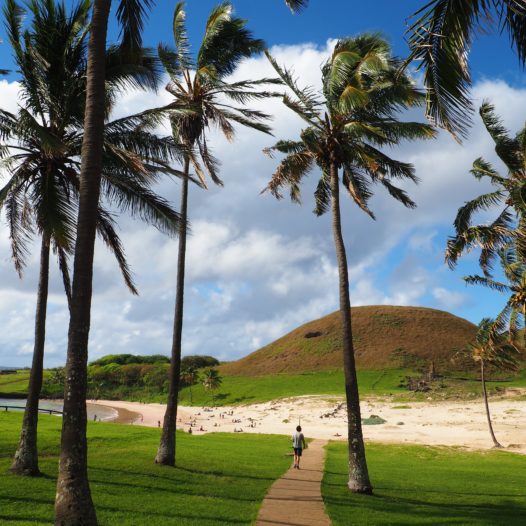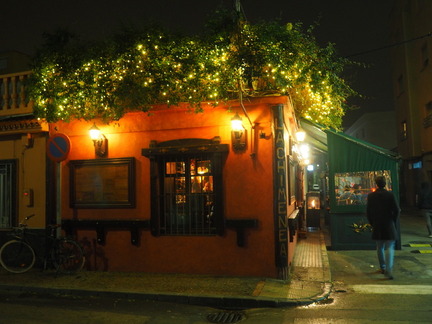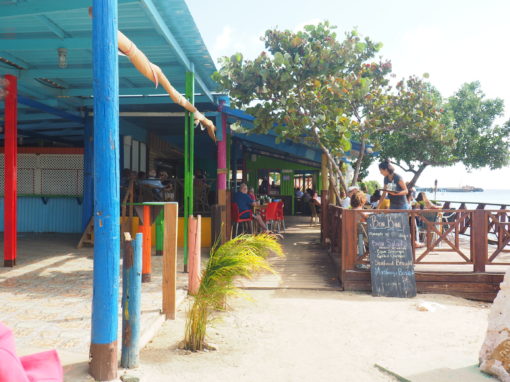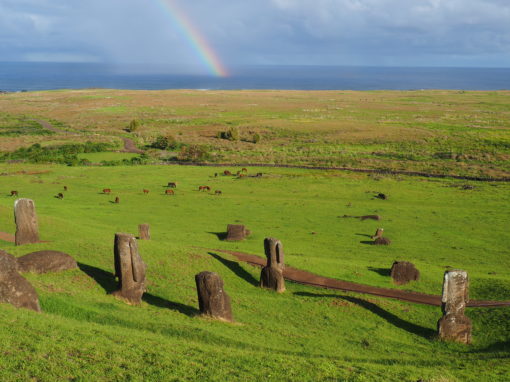Always wanted to visit Polynesia? Has it been a dream of you to see those impressive and mysterious moai statues? Do you want to be on one of the world’s most remote inhabited islands? Yes yes yes? Great! Just one thing… don’t forget to break your piggy bank.
Unfortunately a visit to Rapa Nui comes with a bit of a boooo-pricetag. But… there are some ways to save money! Hurray! I’ll tell you our budget hacks in here, because sharing is caring after all!
-
Flight
The biggest expense of visiting Easter Island will be the flight. There’s only one company flying to Hanga Roa (Latam) and it runs from either Tahiti or Santiago de Chile. The latter one runs twice a day. The flight to Tahiti goes only once a week and this is an expensive one.
The easiest way to save money on the flight is to fly from Santiago and to book it a while in advance. It’s a simple as that. We carefully figured out the cheapest price in the LATAM timetable some six weeks before our flight for the price of $460,- USD. You won’t get it any cheaper than that.
We calculated a stay of five days on the island. You can see all of Rapa Nui within three days. However, since the weather is never a very reliable factor, no matter the season, you might take a day or two extra into account. We did so and we didn’t regret this at all. There’s always some more hiking to do in the area if the sun just happens to be out anyway.
-
Where to stay?
If you’re willing to sacrifice a bit of luxury it is possible to stay at Rapa Nui for the same prices as at Chile mainland. But be on time. Booking.com offers double rooms as little as $39,- USD. per night for two. Not too bad. With Airbnb you might even encounter cheaper deals. We booked a cabin in the woods, just outside of town near Tahai, for $40,- USD a night.
If you’re not planning on renting a car, make sure you’re not staying too far from the main street in Hanga Roa (Atamu Tekena). That’ll make it all a bit more convenient for you.
Don't worry, this is just a replica of an ancient Rapa Nui house. Not our cabin
-
Rent a car, or not?
Although Rapa Nui really is a small island (only 164 sq km / 63 sq miles), to really explore all of it at some point you need to go by car.
I haven’t seen any buses on the island, but I do know that there are a couple of agencies that can bring you around the island, along with a guide. But do yourself a favour and just rent a car – for at least one day.
We figured out it was a bit difficult to rent one beforehand online. On the island itself this isn’t difficult, but it might cost you. For us it was possible to rent a car via our Airbnb. The hostess actually even offered it herself. So once you’ve made your booking, or while you’re in the process of booking of, at Airbnb or Booking or whatever way you’ve found your perfect place to stay; ask whether the owner knows a place where you can rent car, perhaps with a bit of discount.
Our car – a Suzuki Jimny, the most popular car on the island (there must have dropped by a big boat about a decade ago with these ones) – costed us $40,- USD per day. Which isn’t too bad.
If you wake up early and have a bright day ahead of you, it is possible too see all of the further highlights in one day. Easily I’d say. But the unfortunate thing on Rapa Nui is that the weather changes often and very quickly. So in the end you might need another day to do the area justice as you really want to see the statues shining out there in the sun.
If you’re uncomfortable with driving abroad (although at Rapa Nui, there’s really nothing to worry about!) or do not own a license, I think it’s best just to approach other people who already have rented a car. You can always ask whether it’s possible to can come along in exchange of a price split.
I saw many people hitchhiking the island as well. It’s so safe at Rapa Nui that that could actually work out too!
-
Activities: free stuff to do and that national park ticket
Let’s begin with the positive. Once you’re at Rapa Nui, there’s a whole lot to enjoy for free. If the sun is out, you can experience living your best life just by exploring the island. Most of the moai are accessible for free. Even some of the ones that you belong to the national park of Rapa Nui, Ahu Tongariki for example, can be seen from the road.
But … if you’re finally there at Rapa Nui just buy that damn National Park ticket. It costs $80,- USD and though that is a lot, it will be the only ticket you need to buy to really experience everything on the island.
Want some inspiration of what to do for free? Here you go, a small list that will keep you entertained for sure!
- Get a Rapa Nui stamp at the post office of Te Pito o te Henua!
- Hike the western coastal road to the awesome lava tunnels of Cueva de las dos Ventanas
- When the sun is out, drive to Anakena beach. Enjoy the white soft sand with those impressive moai of Ahu Nau Nau and Ahu Ature Huki in the back.
- Brighten your early Sunday morning with a Rapa Nui church ceremony. No matter your believes, it’s fun to see the community all together and dressed-up.
- Figure out what the ancient paintings depict at cave Ana Hai Tanata
- Hike the majestic volcano crater rim of Orongo
- Drive along the huge, but lonely moai on Pia Taro
- Wander around the petroglyphs of Papa Vaka
- Learn more about the Rapa Nui culture and their moai at the Museo Antropológico Padre Sebastián Englert
- Cruise the wild eastern Ireland-like coastlines by car
- End your day with the gorgeous sunset at Ahu Tahai
-
Food
Try to book a room or cabin that has a kitchen included too. Cooking yourself will seriously save you some money, as eating out on Rapa Nui 3x a day can be VERY expensive.
In addition to that, the products in the super market are a tad more expensive than the ones of mainland Chile, especially the fresh products. After all, the island is far remote from, well.. everything.
Moreover, there isn’t like one big supermarket in the small town of Hanga Roa. Just several little ones. All of them have slightly different stuff on offer. Plan your meals ahead and bring as much as you can with you before boarding. Pastas or curries for example are an easy one to bring. But also thing of salt and pepper, sauces, coffee and olive oil.
Do take note however – if you happen to come from an international destination and are planning to go straight after arrival at Santiago Airport to your next flight to Hanga Roa it’s NOT possible to bring fresh foods with you. Customs can be picky and give out fines, so be aware of that banana in your backpack.
-
If you do go to a restaurant though…
.. go to Te Moana!
Funny enough the prices in town for a main course are more or less the same at all of the restaurants: 15.000 CLP / $23,- USD. We visited a couple of places in town, but the meals at Te Moana were the absolutely best for sure.
Order the tuna ceviche and you’ll get a huge seashell stuffed with loads of super tasty chunks of tuna. All of this is accompanied with beautiful views on the ocean, especially during sunset. It’s really worth a little splurge in between!
-
Think ahead
This one might seem more logical than it is. But really, just think of anything that you might need during the trip. Shampoo, band aid, disinfectant, shoes, flip flops, contact lens solutions, contact lenses; all are so much more expensive on Easter Island.
So take a moment while packing.
All in all, I’d say going to Easter Island would basically be expensive because of the flight. Other than that, if you prepare your stay a little bit, in my opinion costs are more or less the same on Chile mainland. So in case you think 500 extra dollars is a bit much for a tiny drop in the ocean, than that makes total sense. For all the other who really want to fulfil that childhood dream, I’d say save a little and go for it while in Chile!














